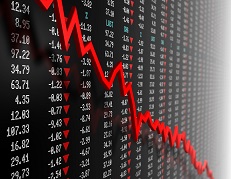CNBC - Bank of America: The 'Great Bull' Market is 'Dead,' and Here is What is Next

Article by Jeff Cox on CNBC Financial
The "Great Bull" market that came after the financial crisis is dead due to slowing economic growth, rising interest rates and too much debt, according to a Bank of America Merrill Lynch analysis.
In its place will be one that features lower returns, the bulk of which will be concentrated in assets that suffered during the recovery, Michael Hartnett, BofAML's chief investment strategist, said in a wide-ranging note looking at markets 10 years after the collapse of Lehman Brothers.
"The Great Bull Dead: end of excess liquidity = end of excess returns," Hartnett said.
The liquidity reference is to central banks that have pumped in $12 trillion worth in various easing programs that have seen 713 interest rate cuts around the world, according to Merrill Lynch. Leading the way has been the U.S. Federal Reserve, which kept its benchmark interest rate anchored near zero for seven years and pumped up its own balance sheet to more than $4.5 trillion at one point.
All that stimulus has led to a 335 percent surge in the S&P 500 since the crisis lows.
But as the Fed and others end asset purchases and gradually raise rates, investors will have to brace for significant changes, Hartnett wrote.
In that climate, he advised investors to focus on "inequality, innovation and immortality," that would benefit pharma companies and technology disruptors, along with inflation plays in commodities.
"The Fed is now in the midst of a tightening cycle, ignoring structural deflation, focusing on cyclical inflation," he said. "Until this Fed hiking cycle ends we suspect absolute returns from financial assets will remain slim & volatile."
The low interest rates and aggressive easing programs fueled a massive run-up in global debt — from $172 trillion pre-crisis to $247 trillion now. Chinese debt rose 460 percent to $40 trillion, global government debt is up 73 percent to $67 trillion, and total U.S. government debt has soared nearly 82 percent since the Sept. 15, 2008, implosion of Lehman, the flashpoint for a crisis that had been brewing for years.
Echoing concerns heard across Wall Street, Hartnett noted that additional increases could cause short-term government bond yields to eclipse longer-term rates, a condition known as an inverted yield curve that has preceded each of the past seven recessions.
"Yet the Fed is now saying 'this time is different' and a flat/inverted curve won't stop them hiking," he said. "A much more hawkish-than-expected Fed is the most likely catalyst for fresh losses across asset markets."
There have been market disruptions that could get worse.
The latest leg of the bull market has been fueled by last year's tax cuts that also contributed to soaring corporate earnings along with a fresh round of share buybacks that is expected to eclipse $1 trillion this year. Buybacks have totaled $4.7 trillion since the crisis.
To read this article on CNBC financial website in its entirety, click here